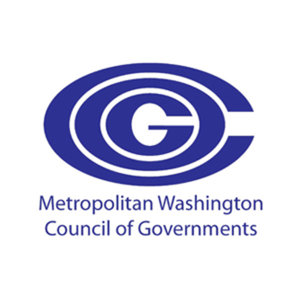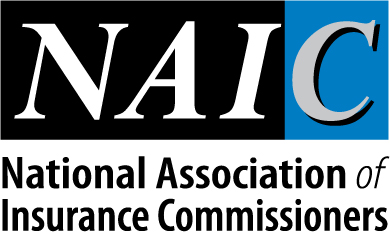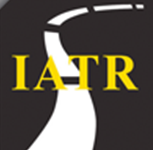The Navy is awarding IDIQ multiple award contracts to 333 contractors that will compete for service requirements solicited by Naval Sea Systems Command; Naval Air Systems Command; Space and Naval Warfare Systems Command; Naval Supply Systems Command; Military Sealift Command; Naval Facilities Command; Strategic Systems Programs; Office of Naval Research; and the Marine Corps.
The 22 functional service areas within the scope of the contracts include: research and development support; engineering system engineering and process engineering support; modeling, simulation, stimulation, and analysis support; prototyping, pre-production, model-making, and fabric support; system design documentation and technical data support; software engineering, development, programming, and network support; reliability, maintainability, and availability support; human factors, performance, and usability engineering support; system safety engineering support; configuration management support; quality assurance support; information system development, information assurance, and information technology support; ship inactivation and disposal support; interoperability, test and evaluation, trials support; measurement facilities, range, and instrumentation support; acquisition logistics support; supply and provisioning support; training support; in-service engineering, fleet introduction, installation and checkout support; program support; functional and administrative support; and public affairs and multimedia support.
These contracts are in addition to the existing 2,212 contracts previously awarded under the SeaPort Enhanced (SeaPort-e) acquisition program for services procurements. The government estimates a maximum of $5,300,000,000 of services will be procured per year via orders issued under the SeaPort-e multiple award contracts. The awards have a three-year base period with one five-year award term. The award of these contracts is a result of the SeaPort-e Rolling Admissions solicitation. The SeaPort-e acquisition is comprised of seven regional zones in which task orders will be competed based upon the principal place of performance. These awards contain provisions to set aside requirements for small businesses, service disabled veteran owned small businesses, 8a business development program and historically under-utilized business zone small businesses. Under these multiple award contracts, each contractor will be provided a fair opportunity to compete for individual task orders solicited within their zone or zones of performance. These contracts were competitively procured via Navy Electronic Commerce Online, with 358 offers received and 333 contracts awarded. Contract funds will be obligated at the time of task order award and as such, multiple funding types (with varying expiration dates) may be used, consistent with the purpose for which the funds were appropriated. The Naval Sea Systems Command, Naval Surface Warfare Center, Dahlgren Division, Dahlgren, Va. is the contracting activity (N00178-11-D-6408-N00178-11-D-6740).
The list of contractors involved are: 1st American Systems and Services, LLC*, Proctorville, Ohio; 1st Choice Staffing, LLC, dba 1st Choice Government Solutions*, Silver Spring, Md.; 22nd Century Technologies, Inc.*, Somerset, N.J.; AASKI Technologies*, Ocean, N.J.; Abex Systems, LLC*, Vienna, Va.; About Web, LLC*, Rockville, Md.; Acquisition Logistics, LLC*, Richmond, Va.; Advance Career Development*, San Jose, Calif.; Advanced Facility Management Services, dba AFMS*, Greencastle, Pa.; Advanced Integrated Technologies, LLC*, Norfolk, Va.; Advanced Resources Technologies, Inc.*, Alexandria, Va.; AEG Group Inc.*, Grayslake, Ill.; Agile Business Concepts, LLC*, Reston, Va.; Agilis Group, Inc., dba AgilisIT*, San Diego, Calif.; Ahrens Consulting Group, LLC*, Dayton, Ohio; Airtec, Inc.*, California, Md.; Alainn, LLC*, Arlington, Va.; Alakai, LLC*, McLean, Va.; Alatec, Inc.*, Huntsville, Ala.; Allied Associates International*, Warrenton, Va.; Alpha Omega Technologies, Inc. *, Rockville, Md.; Alpha-Omega Change Engineering, Inc.*, Hampton, Va.; AMDEX Corp.*, Silver Spring, Md.; American Maritime International, Inc., dba AMI International*, Bremerton, Wash.; American Technology Solutions International*, Stafford, Va.; AMSEC, LLC, Virginia Beach, Va.; Amvet Technologies, LLC*, Las Vegas, Nev.; Anacapa Micro Products, Inc.*, Ventura, Calif.; Analycis, LLC*, Evansville, Ind.; Analysis Design and Diagnostics, dba AD&D*, Jacksonville, Fla.; Analysis, Integration and Design, Inc.*, Melbourne, Fla.; Analytical Services, Inc.*, Columbia, Md.; Apex Skills Group*, Virginia Beach, Va.; Applied Environmental, Inc.*, Herndon, Va.; Applied EnviroSolutions, Inc.*, Tempe, Ariz.; Applied Marine Solutions, LP*, Kailua, Hawaii; Applied Systems and Technology Transfer, LLC*, Youngstown, Ohio; Apprio, Inc.*, Highland, Md.; Arcata Associates, Inc., Las Vegas, Nev.; Ardent Management Consulting, Inc.*, Reston, Va.; ARES Solutions, Inc.*, Fredericksburg, Va.; Arete Enterprises*, Richmond, Va.; ARMEC Corp.*, Knoxville, Tenn.; Armed Forces Services Corp.*, Arlington, Va.; Arnold-Hanafin Corp.*, Boca Raton, Fla.; ASR International Corp., dba ASR Management and Technical Services*, Hauppage, N.Y.; Async-Nu Microsystems*, Fredericksburg, Va.; A-Team Solutions*, Fulton, Md.; Athena Consulting Group, LLC*, North Charleston, S.C.; Atlas North America, LLC, Virginia Beach, Va.; Atmospheric And Environmental Research, Lexington, Mass.; Atteloir, Inc.*, Germantown, Md.; Aveshka, Inc.*, McLean, Va.; Avitecture*, Sterling, Va.; Aviture, Inc.*, Irving, Texas; Aya Associates, Inc., dba COMP U FLOOR*, Maitland, Fla.; Azimuth Corp.*, Dayton, Ohio; Back Country Driving School, Inc.*, Roanoke, Va.; Bay State Computers, Inc.*, Bowie, Md.; Betis Group, Inc.*, Cape Charles, Va.; BizTech Fusion, LLC*, Laurel, Md.; Blanchard's Contracting, LLC*, Washington, D.C.; Blue Canopy Group, LLC*, Reston, Va.; Bluemont Technology & Research, Inc.*, Bluemont, Va.; Bluestone Logic, LLC*, McLean, Va.; BPC Group, Inc., dba BP Consulting Group*, Orlando, Fla.; Brayman Technical Services*, Alexandria, Va.; Brillient Corp.*, Reston, Va.; Bronico, Inc.*, Vacaville, Calif.; Burgos Group, LLC*, Albuquerque, N.M.; Business Integra Technology Solutions, Inc., dba Business Integra*, Greenbelt, Md.; CANA, LLC*, Gainesville, Va.; Capriccio Software*, Fredericksburg, Va.; Capricorn Systems, Inc.*, Tucker, Ga.; Cardinal Engineering, LLC*, Washington, D.C.; Cardinal Point Captains, LLC*, Carlsbad, Calif.; Carter Safety Consultants, Inc.*, Fayetteville, Tenn.; Celerity IT, LLC, McLean, Va.; CENTRA Technology, Inc., Burlington, Mass.; Centuria Corp.*, Reston, Va.; CET, LLC*, Earth City, Mo.; Cetacean Marine, Inc.*, Dania Beach, Fla.; CH2M Hill, Inc., Englewood, Colo.; Chaos Consulting, Inc.*, Fairfax, Va.; The Chigosi Co.*, San Diego, Calif.; Childs Engineering Corp.*, Medfield, Mass.; Chronos Systems, Inc.*, Camp Springs, Md.; Chugach Federal Solutions, Inc*, Anchorage, Alaska; Circinus, LLC, dba Circinus*, Fredericksburg, Va.; CKSolutions, LLC*, Solomons, Md.; Clarke House Technologies, Inc.*, Midland Park, N.J.; Client Network Services, Inc., dba CNSI, Gaithersburg, Md.; Compendium Federal Technologies, LLC*, Lexington Park, Md.; Component Sourcing Group*, Laguna Hills, Calif.; CompQsoft, Inc.*, Houston, Texas; Computer Systems Center, Inc., dba CSCI*, Springfield, Va.; Concept Analysis and Integration*, Silver Spring, Md.; Consolidated Networks Corp.*, Oklahoma City, Okla.; Consumer Management Solutions, LLC*, Dumfries, Va.; Consummate Computer Consultants Systems, LLC, dba C3 Systems*, Lusby, Md.; Costech Inc.*, Winter Springs, Fla.; CPN-Network, LLC*, Washington, D.C.; Craytek, Inc*, Arlington, Va.; Creoal Consulting*, Rockville, Md.; Critigen, LLC, Greenwood Village, Colo.; Croop-LaFrance, Inc.*, Vistor, N.Y.; Cyber Security Research and Solutions Corp., dba CSRS*, La Plata, Md.; Cyberdata Technologies, Inc.*, Herndon, Va.; DanSources Technical Services, Inc.*, Rockville, Md.; Datawiz Corp.*, Vienna , Va.; Davis Strategic Innovations, Inc., dba DSI*, Grant, Ala.; Dennis Millican & Associates, Inc.*, Coral Springs, Fla.; Dependable Global Solutions, Inc.*, Arlington, Va.; The Desilets Group, Inc.*, Bristow, Va.; Dfuse Technologies, Inc., dba Dfusetech.com*, Ashburn, Va.; DIGITALiBiz, Inc.*, Rockville, Md.; Diligent Consulting, Inc.*, San Antonio, Texas; DKJ Technologies, Inc.*, Beavercreek, Ohio; DMP Services*, El Cajon, Calif.; Donald L Blount and Associates*, Chesapeake, Va.; Driven Engineering, Inc.*, Semmes, Ala.; DSD Laboratories, Inc.*, Sudbury, Mass.; DSU Staffing, Inc.*, Raleigh, N.C.; Dunhill Personnel of Hawaii, dba Dunhill Professional Staffing of Hawaii*, Honolulu, Hawaii; Dyonyx, LP*, Houston, Texas; EclecTek, LLC*, California City, Calif.; EDC Consulting, LLC*, Washington, D.C.; Edwards Industries, dba Edwards Project Solutions*, Hanover, Md.; The Electronic On-Ramp, Inc.*, Rockville, Md.; Ellumen, Inc.*, Arlington, Va.; Elusive Solutions, Inc.*, King George, Va.; Emtec Federal, Springfield, N.J.; EnergySolutions Government Group, Inc., Oak Ridge, Tenn.; Engineering & Computer Simulations, Inc.*, Orlando, Fla.; ER Williams, Inc.*, Silver Spring, Md.; Escape Communications, Inc.*, Torrance, Calif.; ETSVETS, Inc.*, Enterprise, Ala.; Federal Program Integrators, LLC*, Indian Island, Maine; Financial Systems Consultants, Inc., dba FSC*, Cape Charles, Va.; Forwardyne Systems, Inc.*, San Diego, Calif.; FT Technologies, LLC*, Olney, Md.; Fulcrum Technology, LLC*, Bedford, Ind.; Fuse Integration, Inc.*, Long Beach, Calif.; Futech Technolgies, Inc.*, Baltimore, Md.; G2 Ops, Inc.*, Sierra Vista, Ariz.; Gale Force Software Corp.*, Indianapolis, Ind.; Gallup, Inc., dba The Gallup Organization, Washington, D.C.; Garud Technology Services, Inc.*, Ellicott City, Md.; GBTI Solutions, Inc.*, Herndon, Va.; Gella, LLC*, Johnstown, Pa.; Global Resource Management, Inc.*, Suwanee, Ga.; Global Resource Solutions, Inc.*, Olympia, Wash.; Government Technology & Business Services, Inc., dba GTBS*, Falls Church, Va.; GTANGIBLE*, Alexandria, Va.; The Hambrick Group, Inc.*, Los Angeles, Calif.; Hazard Management Solutions, Inc.*, Arlington, Va.; Hickory Ground Solutions*, Heathsville, Va.; Hi-Tec Systems, Inc., dba Hi-Tec Systems*, Egg Harbor Township, N.J.; Hooah, LLC*, Winter Park, Fla.; HVF West, LLC, Tucson, Ariz.; iAccess Technologies, Inc.*, Long Beach, Calif.; Icube Systems, Inc.*, Clifton, Va.; Ideogenics, LLC*, Washington, D.C.; iGouge, LLC*, Carlsbad, Calif.; Imagine Media Group, LLC, dba IMG Networks*, Chula Vista, Calif.; Impres Technology Solutions, Inc.*, Santa Fe Springs, Calif.; Infinity Technology, LLC*, McLean, Va.; Information Engineering Services, Inc., dba IES*, Alexandria, Va.; Information Technology Coalition, Inc., dba IT Coalition*, Alexandria, Va.; Information Technology Solutions & Consulting, LLC*, Falls Church, Va.; Ingenium Corp.*, Greenbelt, Md.; Integrated Technologies of Kansas, Inc.*, Wichita, Kan.; Integrity Management Consulting, Inc.*, McLean, Va.; IntellecTechs, Inc.*, Virginia Beach, Va.; Intelligence, Communications and Engineering, Inc., dba ICE-PS*, Sierra Vista, Ariz.; Intelligent Payload Solutions, Inc.*, Colorado Springs, Colo.; Intelligent Software Solutions, Inc., Colorado Springs, Colo.; Intelligent Systems Research, Inc.*, Agoura, Calif.; Intrinsyx Technologies Corp.*, Moffett Field, Calif.; iParametrics, LLC*, Alpharetta, Ga.; Ironhawk Technologies, Inc.*, Los Angeles, Calif.; Isomorphic Systems, LLC*, Trinidad, Colo.; IST Research, LLC*, Fredericksburg, Va.; IT Strategic Performance Firm*, San Antonio, Texas; ITCS, LLC*, Purcellville, Va.; ITechnology Group, LLC, dba ITGROUP*, Wayne, N.J.; J.L. Marshall & Associates, Inc.*, Virginia Beach, Va.; Jacer*, Fairfax, Va.; JRC Integrated Systems, Inc.*, Vienna, Va.; Kairos Consulting Worldwide, LLC*, Chicago, Ill.; Katmai Information Technologies, LLC*, Anchorage, Alaska; KEMA, Inc., Burlington, Mass.; KineTexas, Inc.*, Tempe, Ariz.; KNWEBS, Inc.*, Oklahoma City, Okla.; KORE Federal, Inc.*, Falls Church, Va.; Krozak Information Technologies, Inc.*, Silver Spring, Md.; La Jolla Logic*, San Diego, Calif.; Laxton Consulting, LLC*, Springfield, Va.; Level 4 Press, Inc., dba Level 4 Ventures, Inc.*, Jamul, Calif.; Levick Strategic Communications*, Washington, D.C.; Liberty Solutions*, Alpine, Calif.; Linium, LLC*, Albany, N.Y.; LinkVisum Consulting Group, Inc.*, Leesburg, Va.; Lion-Vallen, LP, dba LVI, Dayton, Ohio; Management Science and Innovation, Inc., dba 6 Sigma Technology Group*, Chantilly, Va.; Marc Enviro Services, Inc.*, Omaha, Neb.; The Mayvin Consulting Group, Inc.*, Alexandria, Va.; McNeal Professional Services, dba McNeal Wireless Services*, Kennesaw, Ga.; MedPacs, LLC*, Seattle, Wash.; Mega-Tech*, McLean, Va.; Metro Productions Government Services, LLC*, Hampton, Va.; MicroSys, LLC*, Manassas, Va.; Mission Assurance International, dba MAI*, Tampa, Fla.; Modus21*, Mount Pleasant, S.C.; MOSAIC Technologies Group, Inc.*, Fulton, Md.; Mustang Technical Services, LLC*, Fredericksburg, Va.; National Defense Advisors, Inc.*, Fairfax Station, Va.; The NAVSYS Corp.*, Colorado Springs, Colo.; Net Esolutions Corp.*, McLean, Va.; Neubrain, LLC*, Rockville, Md.; New River Systems Corp.*, Reston, Va.; Newmoyer Geospatial Solutions, LLC*, Mount Pleasant, S.C.; Nexus Technologies, Inc.*, Reston, Va.; Noise Control Engineering, Inc.*, Billerica, Mass.; Novus Origo, LLC*, Vista, Calif.; NucoreVision, Inc.*, Lanham, Md.; NVision Solutions, Inc.*, Bay St. Louis, Miss.; Occam Solutions, Inc.*, McLean, Va.; Occoquan Crew Technologies, Inc.*, Dumfries, Va.; Oceanit Laboratories, Inc., dba OCEANIT*, Honolulu, Hawaii; Octo Consulting Group, Inc.*, Vienna, Va.; Odyssian Technology, LLC*, South Bend, Ind.; Old Dominion University Research Foundation, Norfolk, Va.; Olusys, Inc.*, Camarillo, Calif.; Omitron, Inc.*, Beltsville, Md.; OmniPulse Technology Corp.*, San Diego, Calif.; Organon Advisors, Inc.*, Silver Spring, Md.; Osen-Hunter Defense Systems, LLC*, Madison, Va.; Ostari, Inc.*, Los Gatos, Calif.; OT Training Solutions, Inc.*, Orlando, Fla.; Performance Aircraft Services, dba Performance Aircraft Fuel Systems*, Grapevine, Texas; Phigenics, LLC*, Naperville, Ill.; Pierson Computing Connection, Inc..*, Mechanicsburg, Pa.; The Pierson Group, LLC*, Washington, D.C.; Precision Computing Intelligence, LLC*, Sierra Vista, Ariz.; Precision Task Group*, Houston, Texas; Premier Consulting & Management Services, Inc., dba PCMS*, Atlanta, Ga.; PricewaterhouseCoopers LLP, McLean, Va.; Professional Solutions Delivered, LLC, Professional Services*, King Georga, Va.; Qi Tech, LLC*, Vienna, Va.; Quantell, Inc.*, Grantsville, Md.; Quantum Technology Sciences, Inc., dba QTSI*, Cocoa Beach, Fla.; R.H. Shackelford, Inc.*, San Antonio, Texas; R3 Strategic Support Group*, Coronado, Calif.; RedHawk IT Solutions, LLC, dba RedHawk IT*, Woodbridge, Va.; Reefpoint Group, LLC, dba Reefpoint Group*, Annapolis, Md.; RoundTurn, LLC*, Richmond, Va.; S. H. Huber and Associates, Inc.*, Oxnard, Calif.; SA Technical Services, Inc.*, Niceville, Fla.; Sabio Systems, LLC*, Albuquerque, N.M.; Saras America, Inc.*, Farmington Hills, Mich.; Schultz-Creehan Holdings, Inc.*, Blacksburg, Va.; Seawolf Solutions, Inc.*, McLean, Va.; Selsoft, Inc.*, Allen, Texas; Sensis Corp., East Syracuse, N.Y.; Sericore, LLC, dba Sericore Technologies*, Hanover, Md.; Shackleton Group, Inc.*, Lakewood, Colo.; Shipley, Inc., dba Isolated Ground*, Glendale, Calif.; Sierra Cybernetics, Inc.*, Anaheim Hills, Calif.; Sierra Infosys, Inc.*, Houston, Texas; Sierra Nevada Corp.*, Sparks, Nev.; SilverRhino, LLC*, Rockville, Md.; SNR Systems, LLC*, Leesburg, Va.; Software Professional Solutions, Inc.*, Farmingdale, N.J.; Sparc, LLC*, Charleston, S.C.; Spartan Management, LLC*, Manassas, Va.; Standard Technology, Inc.*, Warner Robins, Ga.; Statscom, Inc.*, Ashburn, Va.; Stealth Network Communications*, Scotts Valley, Calif.; Strategic Applications and Technologies, Inc.*, Columbia, Md.; Submergence Group, LLC*, Chester, Conn.; Superior Communication Solutions, Inc.*, Moultrie, Ga.; Swanson Services, LLC, dba Swanson Security Guard & Patrol Services*, Richmond, Va.; Symphony Consulting Group, Inc.*, Herndon, Va.; Synergy Technology Services, Inc.*, Eddystone, Pa.; Systems Software Solutions, Inc., dba 3S USA*, Bloomingdale, Ill.; TAF & Associates, Inc.*, Fairfax, Va.; Talentscale, LLC*, Lake Elsinore, Calif.; TeamStaff Government Solutions, Loganville, Ga.; Technical Automation & Management, Inc., dba TEAM*, Falls Church, Va.; Technology Blue, Inc.*, Cranberry Township, Pa.; Technology Concepts & Design, Inc.*, Reston, Va.; Telnet, Inc.*, Rockville, Md.; TeraLogics, LLC*, Ashburn, Va.; TeraThink Corp.*, Reston, Va.; Texeltek, Inc.*, Annapolis Junction, Md.; Thermopylae Sciences & Technology, LLC*, Arlington, Va.; Thor Solutions*, Annandale, Va.; Three S Consulting, Inc.*, San Francisco, Calif.; Tiber Creek Consulting, Inc.*, Farifax, Va.; Titanium Cobra Solutions, LLC*, San Diego, Calif.; Torknet, LLC*, Suitland, Md.; Total Computer Solutions, Inc.*, Arlington, Va.; TRAX International Corp., Las Vegas, Nev.; Tri Com Enterprises, Inc.*, Va Beach, Va.; Trinuc, LLC*, Buffalo Grove, Ill.; Tritus Technologies, Inc.*, Gainesville, Va.; Triune Solutions, LLC*, Washington, D.C.; Troika Solutions, LLC*, Arlington, Va.; Troy Networks, Inc.*, Lovettsville, Va.; Trusted Intelligence Support Services Corp.*, Scottssboro, Ala.; TurningPoint Global Solutions, LLC, dba TurningPoint*, Rockville, Md.; U.S. Information Technologies*, Chantilly, Va.; United Federal Systems, Inc.*, Reston, Va.; USmax Corp.*, Gambrills, Md.; Valicore Technologies, Inc., dba Valicore*, Irvine, Calif.; Vantage11, LP*, Tinton Falls, N.J.; Varilog Research, Inc.*, Beltsville, Md.; VariQ Corp.*, Washington, D.C.; Vetegrity, LLC*, Annapolis, Md.; Virsys, LLC*, Dunn Loring, Va.; VisionOnline.com, LLC, dba VOL*, Reston, Va.; Watershed Security, LLC*, Chesapeake, Va.; Web and Writing Solutions Co.*, Pasadena, Md.; Wight & Company, dba Wight Construction, Darien, Ill.; Windwalker Corp.*, McLean, Va.; Wittenberg Weiner Consulting, LLC*, Tampa, Fla.; Wolf Technical Services, Inc.*, Indianapolis, Ind.; Xeeto, Inc.*, Miami, Fla.; Yearround Accounting Taxes, LLC, dba McKinley Group*, Gaithersburg, Md.; Z and A Infotek Corp., dba Xeon Info*, Parsippany, N.J.; The Zanfer Group, LLC*, Lusby, Md.; Zantech IT Services, Inc.*, McLean, Va.



 Add Comment
Add Comment

.png)











.png)




















 Perrin (pictured right) has 30 years' experience in government and military, including positions with American Airlines, BCD Travel,
Perrin (pictured right) has 30 years' experience in government and military, including positions with American Airlines, BCD Travel, 
